More results...
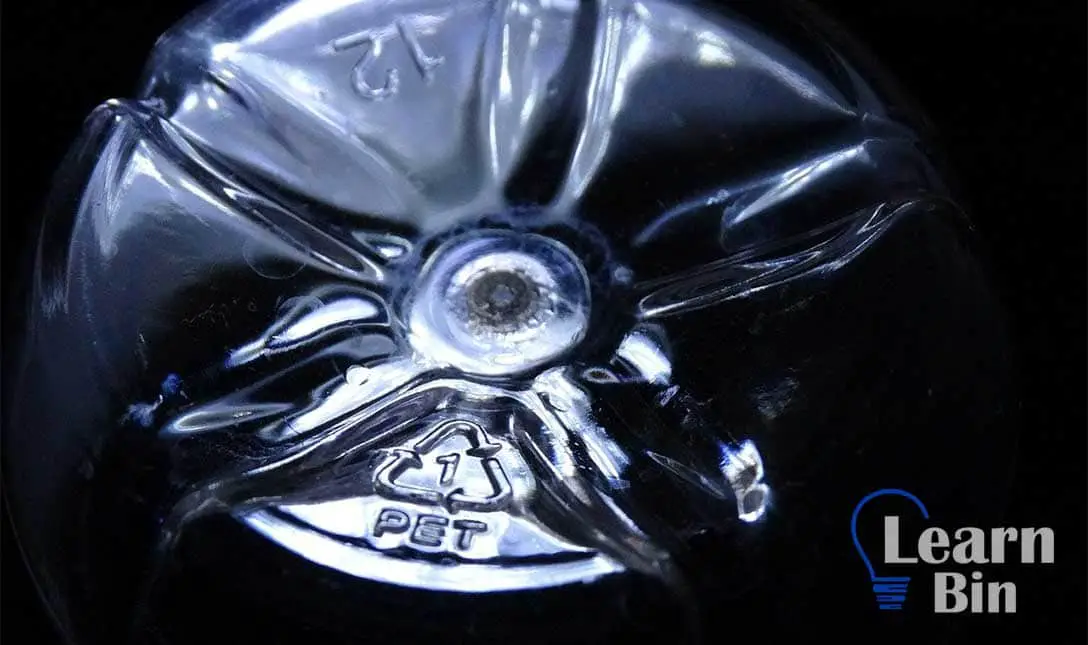

Polyethylene Terephthalate (PET) is also abbreviated as PETE. This is the short form for polyethylene terephthalate. PET is synthesized by polyesterification of ethylene glycol and terephthalic acid.
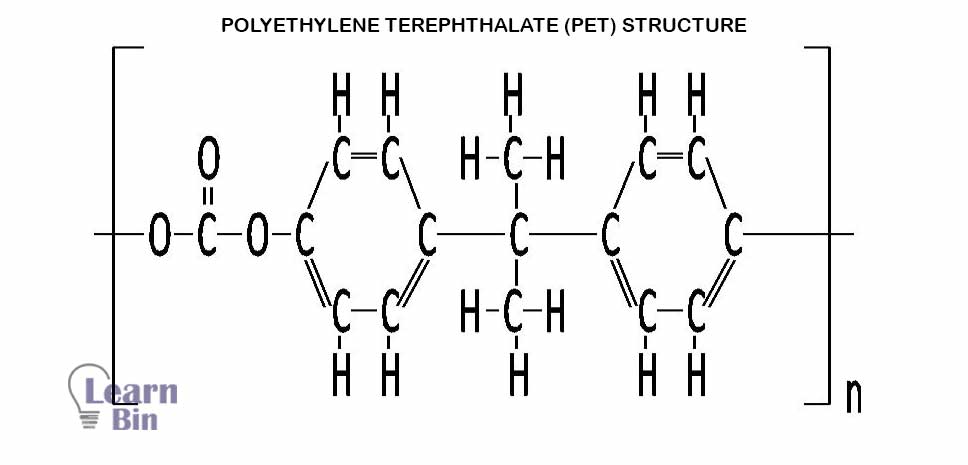
PET is commercially manufactured by a batch process of trans-esterification reaction. There are 2 stages involved in this process. Those are esterification and polycondensation.
Esterification is a catalytical process. Catalyst is Zinc acetate, Mg, Ca, Co, and Pb acetates. The end products of the esterification process are Methanol and di (βhydroxy ethyl terephthalate).
The second step is the Polycondensation of di (βhydroxy ethyl terephthalate) under vacuum and heating. In such process result PET.
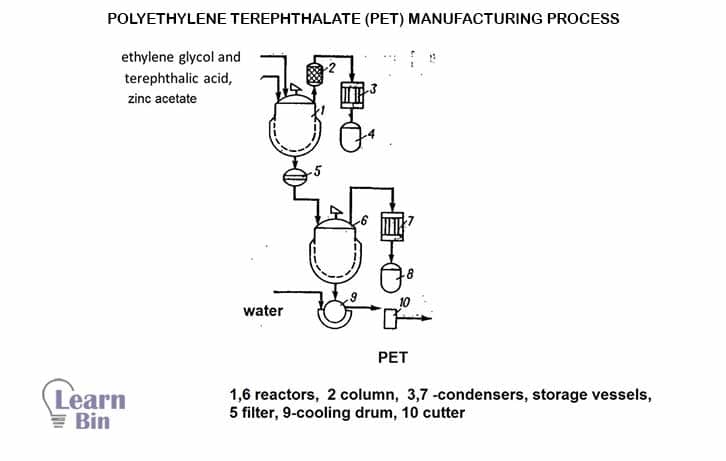
PET is different from other engineering plastics. Typically, the properties of PET in which they differentiate themselves from other engineering plastics are their low water absorption in comparison to Nylon. Due to the low water absorption, PET has high dimensional stability. PET has excellent electrical properties.
PET is a hard solid of light cream color or transparent. It can be crystalline or amorphous. Molecular weight 20000-40000 g/mol.
PET has very low creep for self-reinforced (crystalline) morphology even at elevated temperatures. PET is an excellent weathering-resistant material and it has very good color stability. Also, PET is a very good heat and heat aging resistance material.
| Tensile Strength (crystalline) | 2.5 N/mm² |
| Notched Impact Strength | 1.5 -3.5 KJ/m² |
| Maximum working temperature | 80 ℃ |
| Density | 1.37 g/cm3 |
PET shows excellent resistance to chemical attacks and high environmental stress crack resistance. It shows very good resistance to dilute acids, aliphatic hydrocarbons, oils, grease, and alcohol. PET shows moderate resistance to dilute alkalis, aromatic hydrocarbons, and halogenated hydrocarbons.
The main degradations way that Polyethylene Terephthalate can occur are hydrolytic and probably more important than thermal oxidation. When PET degrades, several things happen. Such as discoloration, chain sessions that result in reduced molecular weight, formation of acetaldehyde, cross-links ("gel" or "fish-eye" formation), etc.
Discoloration of the material is happening because of the formation of several chromophoric systems following prolonged thermal treatment at higher temperatures. Another problem arises when the optical requirements of the polymer are much higher. Such as applications like in packaging applications, This becomes a problem.
When PET is subjected to hydrolysis it forms Carboxylic acid and alcohol. 0.06% of water content is sufficient to reduce the molecular weight of PET by two times. Therefore, it is necessary to remove the moisture before processing. PET is dried at 70℃ for 4 hours prior to extrusion and injection molding.
Stretch blow molding and extrusion (fiber extrusion and sheet extrusion) are the most common PET processing techniques. Fibers, PET sheets, PET bottles, and tapes are the main applications of PET.
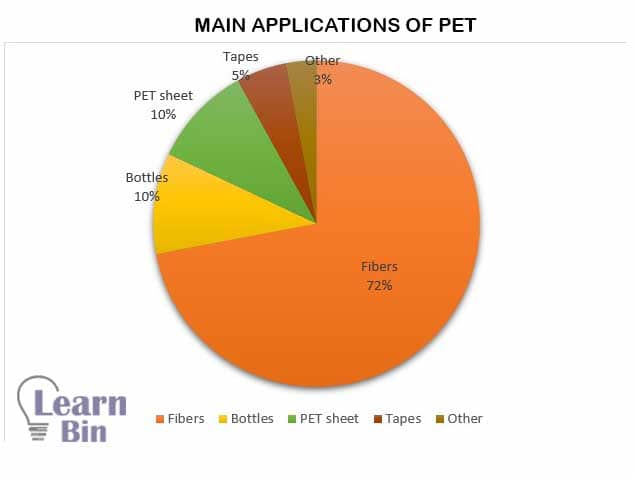
Polyethylene Terephthalate (PET) shows good barrier properties against O2 and CO2. Therefore, it is utilized in bottles for highly carbonated drinks and mineral water.
PET fibers are manufactured by the Fiber extrusion process. The main raw material for fiber production is granules of PET. A single screw extruder is used for PET processing. One extruder may have 20-100 extrusion dies. The number of holes in the extrusion dies for spinning is distributed according to the fineness of the threads for 100-2000. The hole diameter of extrusion dies IS 0.2-0.6 mm.
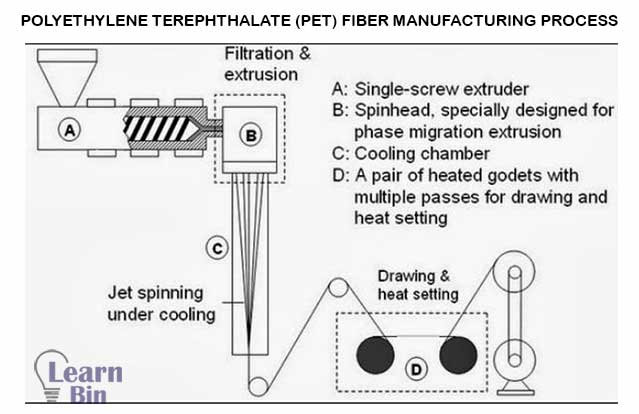
Polyester is a versatile textile fiber, as it comes in a range of colors and can be woven into patterns. It is a cheap alternative to natural fibers such as wool.
PET is used for take-out food containers and prepared food trays. These trays can be warmed in the oven or microwaved. The basic chemical formula of these "dual oven-able" trays and containers is the same as PET bottles and jars. But they have special additives that crystallize and toughen the PET. So, these "dual oven-able" trays and containers have the ability to withstand the much higher temperatures of the oven and microwave oven heating.
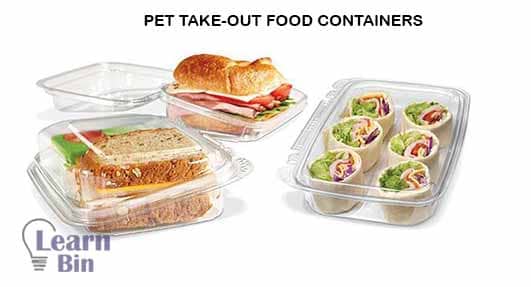
Heat resistance and adhesion PET tapes are used for powder coating masking, High-temperature paintings, and galvanization. Other applications of PET tapes include audio/videotapes as well as mechanical components.
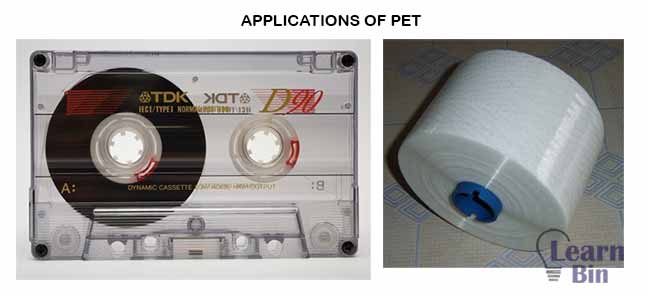
Plastic bottles create environmental problems. More than 7.5 million tons of PET waste are dumped into the environment annually.
Ideonella sakaiensis is a bacterium from the genus Ideonella and the family Comamonadaceae which is used to break down PET plastic. It was observed that this bacterium uses two different enzymes that react with water to break down PET plastics into terephthalic acid and ethylene glycol. These substances on their own pose no threat to the environment.
